Pesto is a delicious way to add flavor to so many dishes. Traditionally pesto is made with fresh basil but there are so many other substitutes for basil you can try.
Why use a substitute for basil? Perhaps like me, you don't like the way basil tastes, or maybe you just don't have any fresh basil.
Pesto is also a great way to use up an abundance of herbs. To save extra herbs you can also freeze them.
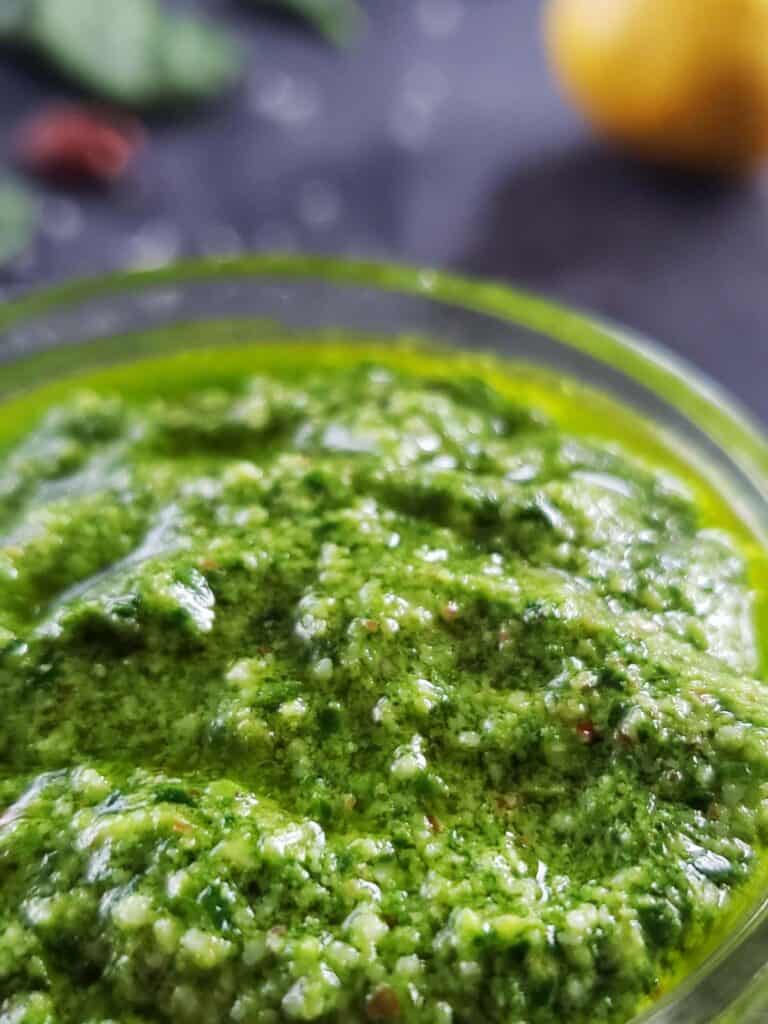
Jump to:
Does Pesto Have to Have Basil?
Nope. There are so many great substitutions for basil that make terrific pesto. Remember that basil has its own unique flavor profile so making substitutions will change the way your pesto tastes.
What Works in Place of Basil?
Basil has a soft texture and is mild and peppery. It also has a subtle black licorice flavor which you may or may not enjoy.
The best substitutes for basil in pesto are other greens that have similar properties. Herbs like parsley, oregano, cilantro, mint, sage, or tarragon work well.
Guide to Fresh Herbs: Shopping, Storage, and Cooking Tips
Leafy greens like spinach, kale, arugula, or even carrot and beet greens also make great substitutions.
You can even use a combination of substitutions
Basil Substitutions
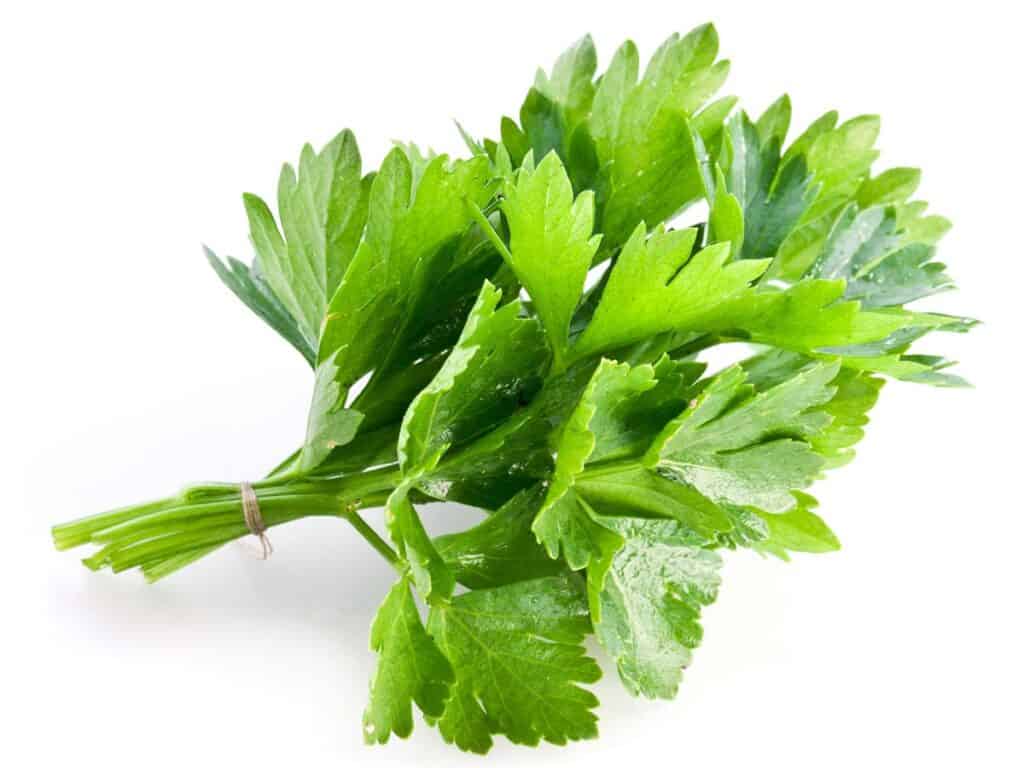
Fresh Parsley
Parsley has a fresh grassy flavor. There are two types of parsley flat leaf and curly parsley. Flat-leaf or Italian parsley has the best texture and flavor for cooking. Curly parsley is coarser and is best used only as a garnish.
Pair parsley pesto with beef, carrots, green beans, and other spring vegetables.
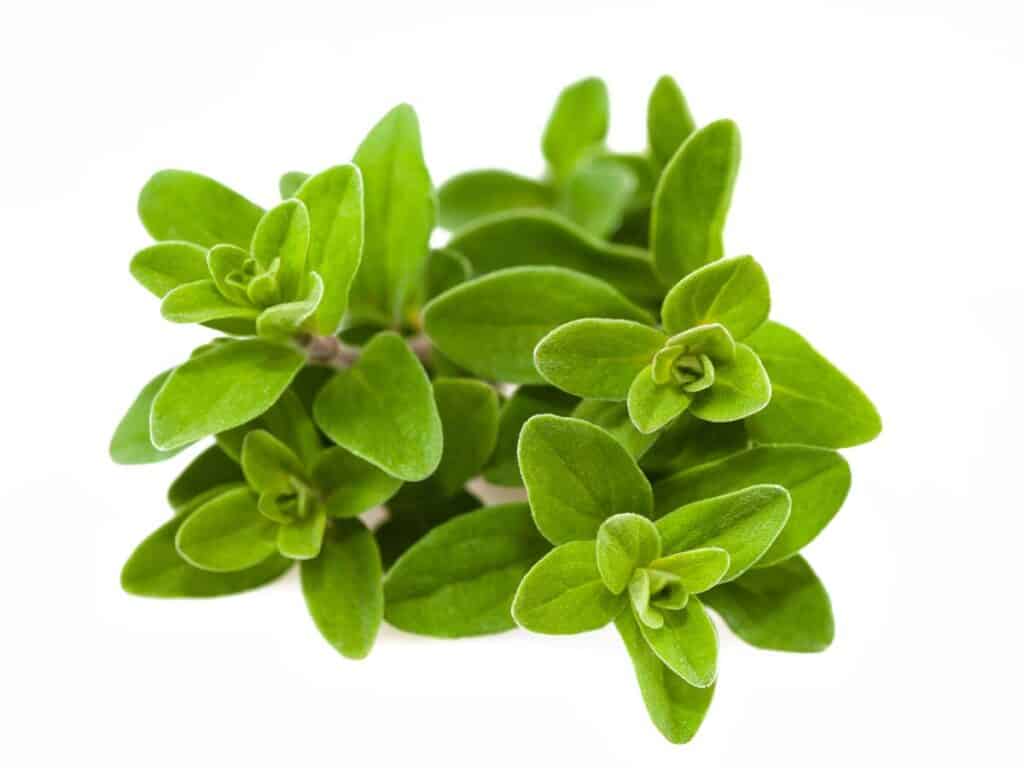
Fresh Oregano
Oregano is common in Mediterranean dishes. It has a peppery bitter flavor. Be sure to use just the leaves, the stems are too tough.
Oregano pairs well with tomatoes, eggplant, zucchini, lamb, chicken, and beef.
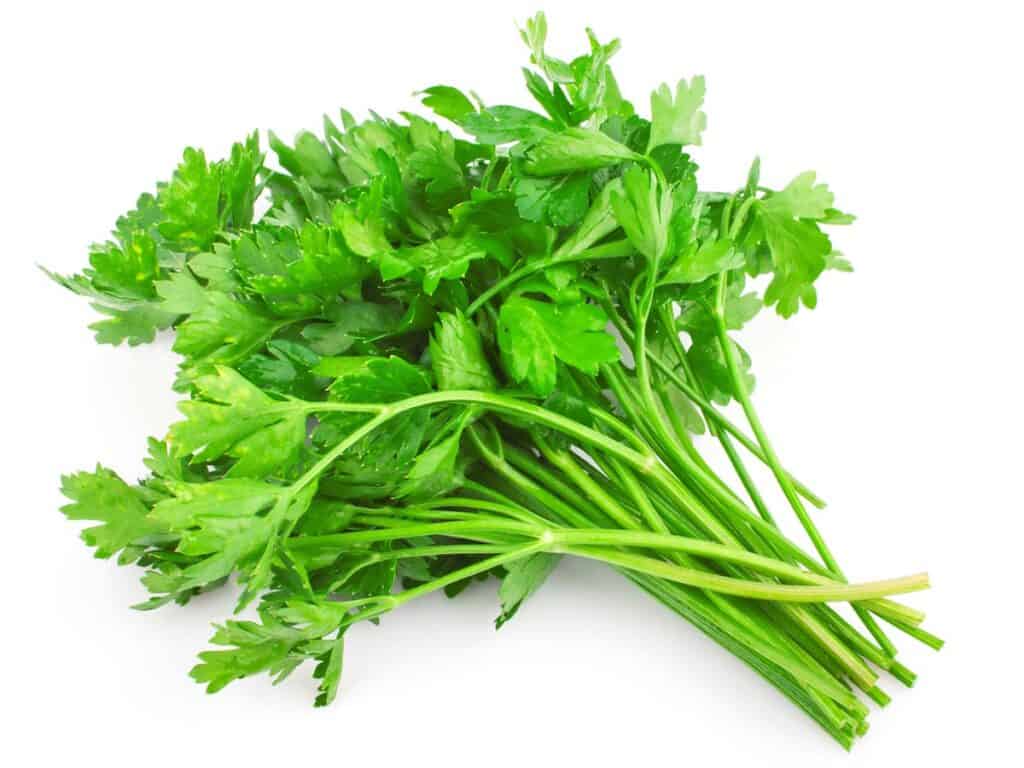
Fresh Cilantro
Cilantro is a controversial herb if herbs can be such things. To some cilantro has a bright citrusy flavor to others it tastes like soap.
Cilantro is commonly paired with Mexican dishes. Pesto made with cilantro would be an excellent sauce for your next taco night.
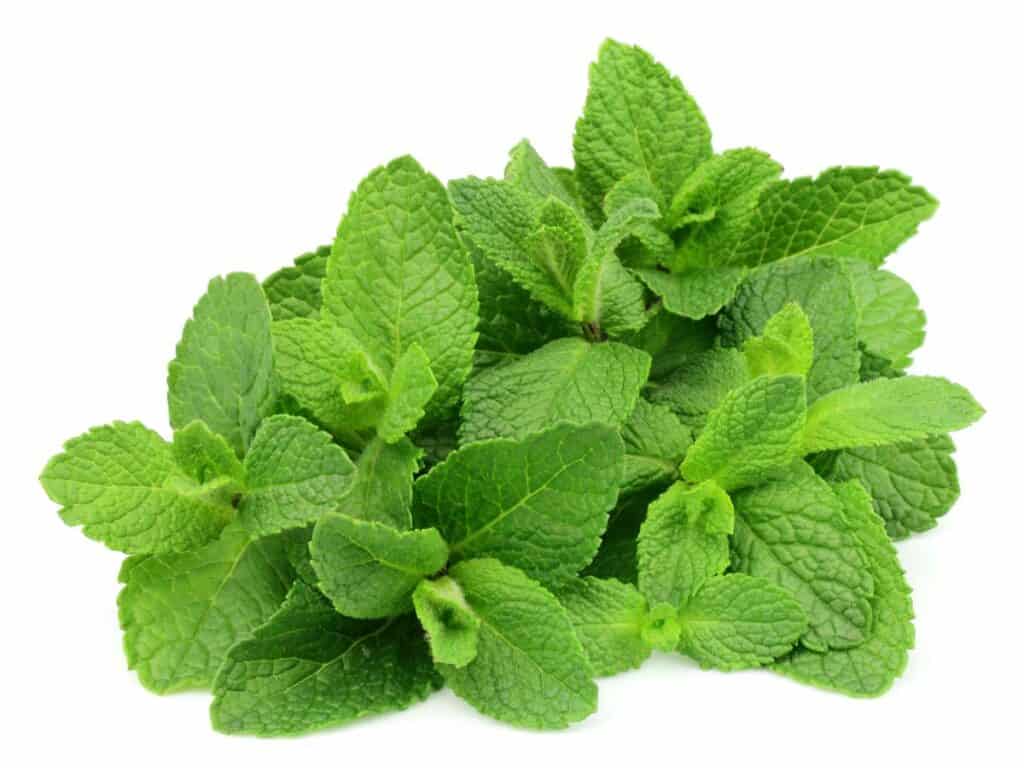
Fresh Mint
Mint has a similar color and texture to basil it also has a sweet cool flavor. It is commonly paired with lamb or spicy dishes.
Spearmint has a sweeter flavor while peppermint has a much stronger flavor.
I also love adding mint to these fresh mint chocolate chip cookies and these mint chocolate brownies.
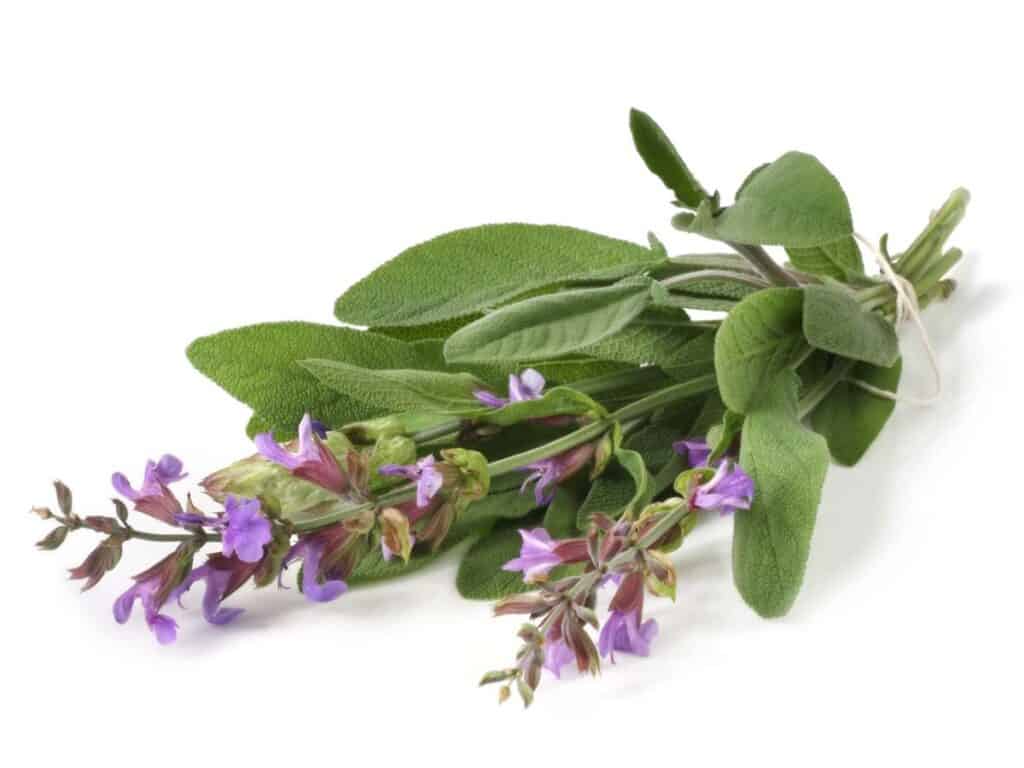
Fresh Sage
Sage has a bitter musty flavor. Because sage leaves are smaller it is helpful to combine them with another basil substitution.
Sage pairs well with winter squash, pork, and apples.
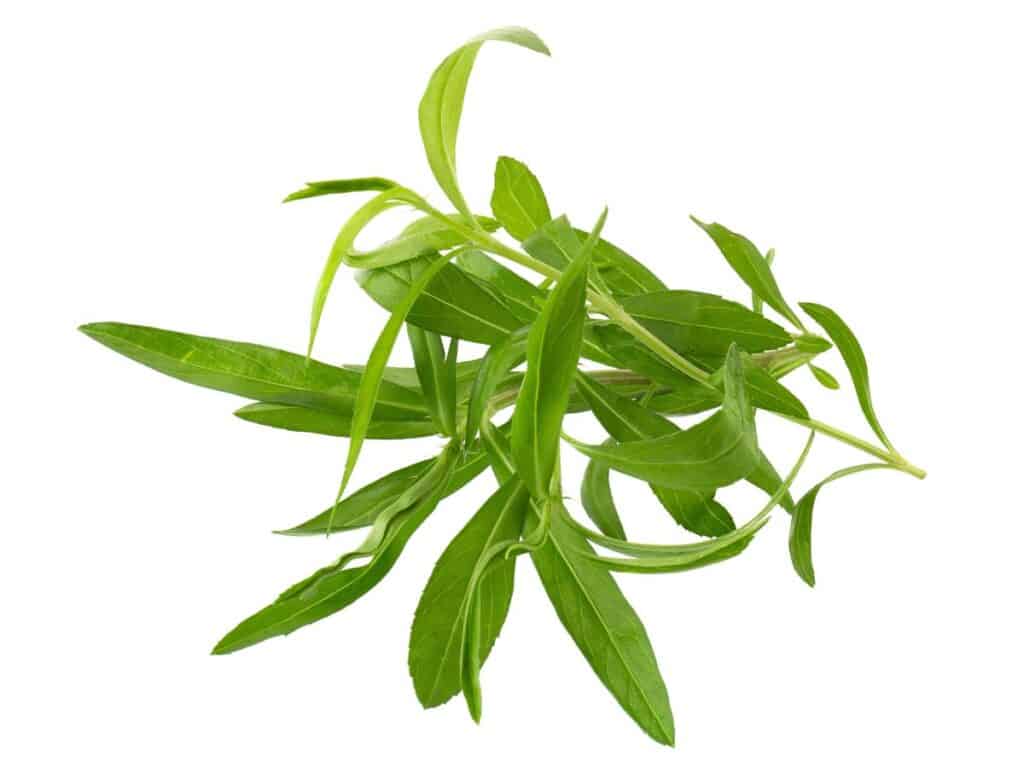
Fresh Tarragon
Tarragon has a sweet licorice flavor similar to basil. Because tarragon leaves are smaller it is helpful to combine it with another basil substitution.
Spoon tarragon pesto over roasted vegetables or fish.
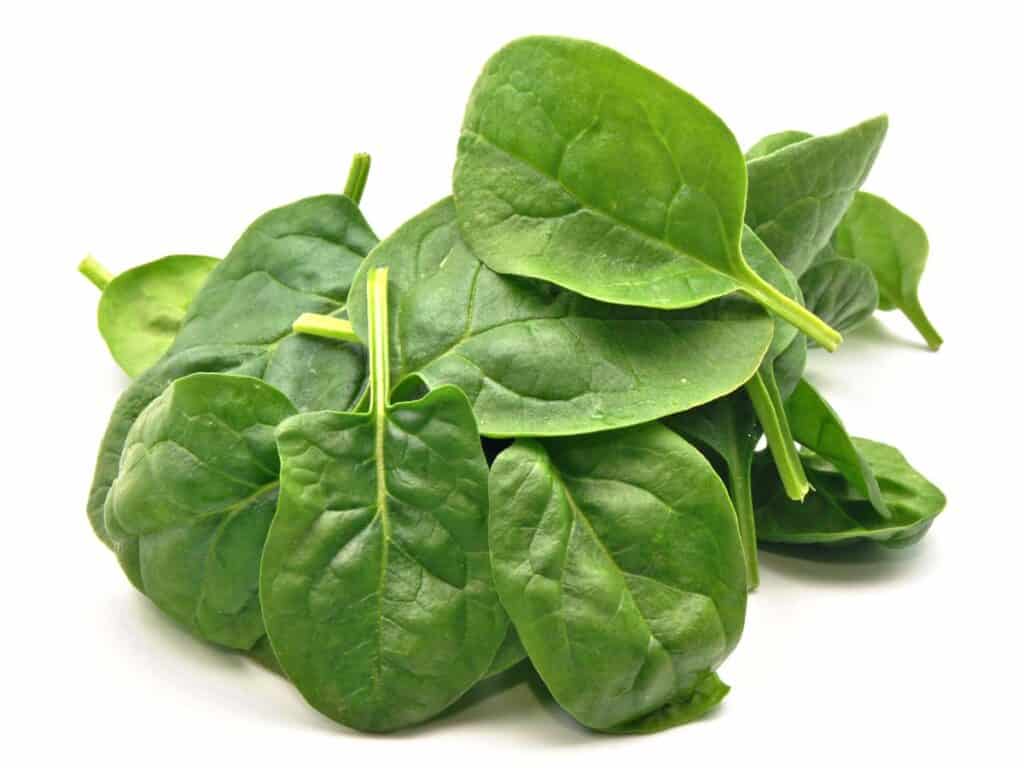
Spinach
Spinach is an excellent substitute for basil mimicking its color and texture. Its flavor is also much milder than basil.
Spinach is actually my favorite basil substitute. When I want pesto I often make this spinach pesto.
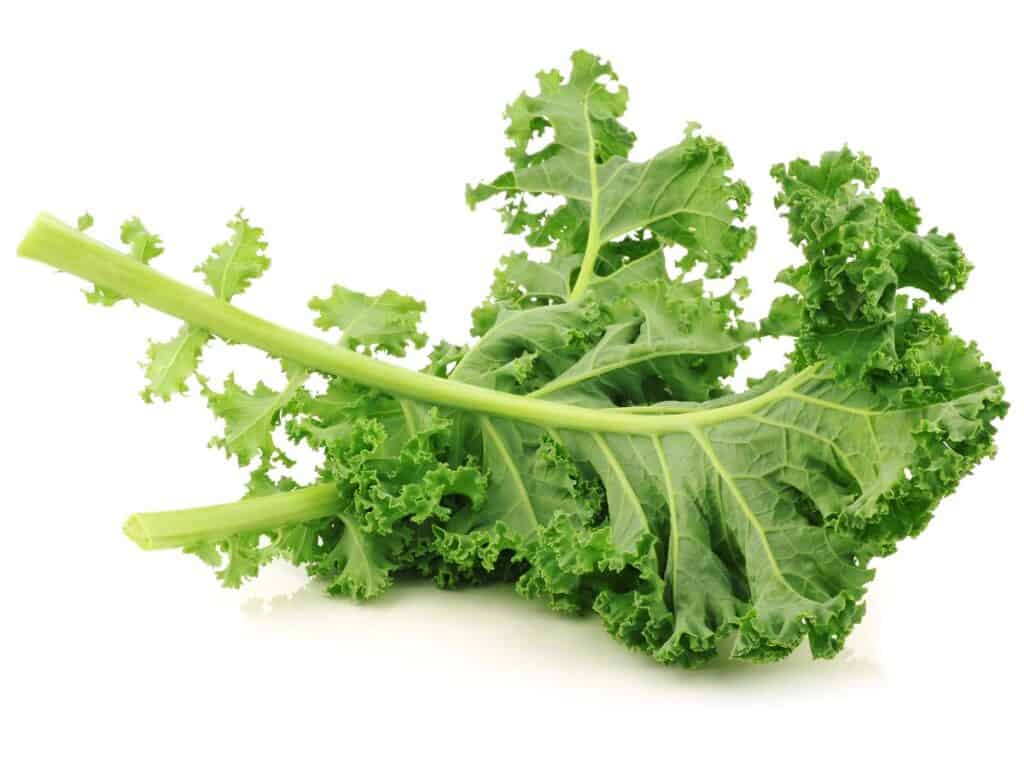
Kale
Kale is another great leafy green substitute for basil. It has a stronger flavor than spinach.
Because kale can be tough I suggest using just the leaves and not the stems. It is also helpful to blanch the kale leaves before adding them to your pesto to prevent stringy pesto.
Use kale as a basil substitute in the winter when other substitutes may not be available.
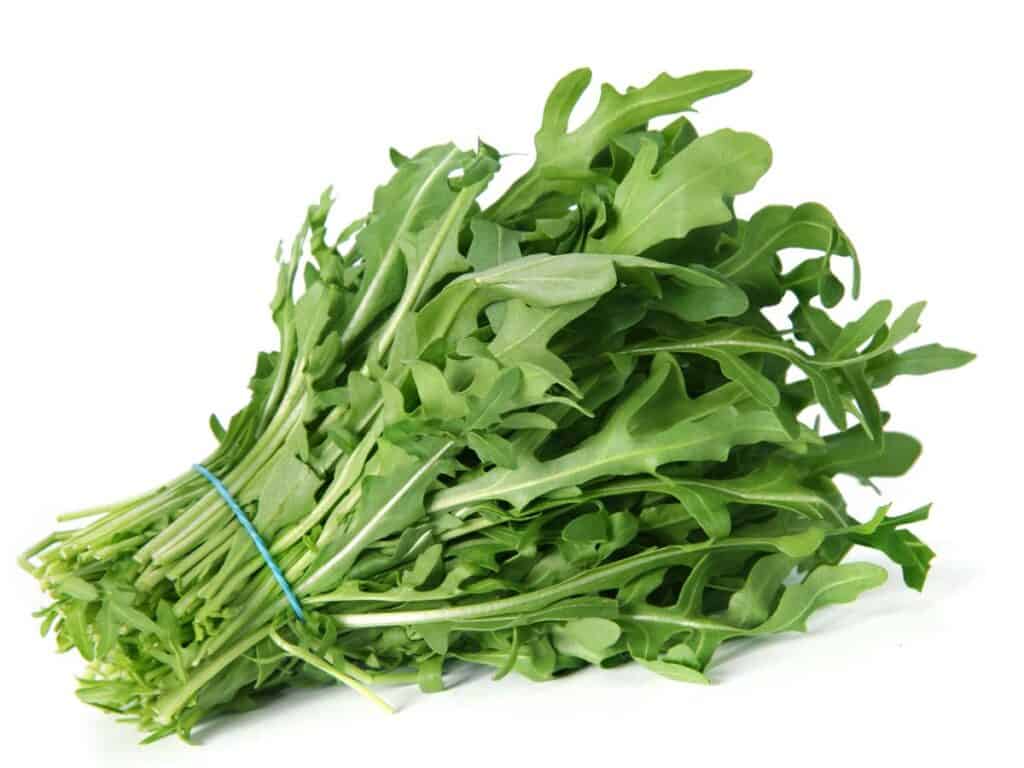
Arugula
Arugula has a strong peppery flavor. I like to stir arugula pesto into hummus or ranch to temper its peppery flavor.

Carrot Greens
Carrot greens taste very similar to parsley. Not surprising considering they are in the same family.
Carrot top pesto makes a delicious dip for spring vegetables like carrots, snap peas, and radishes.
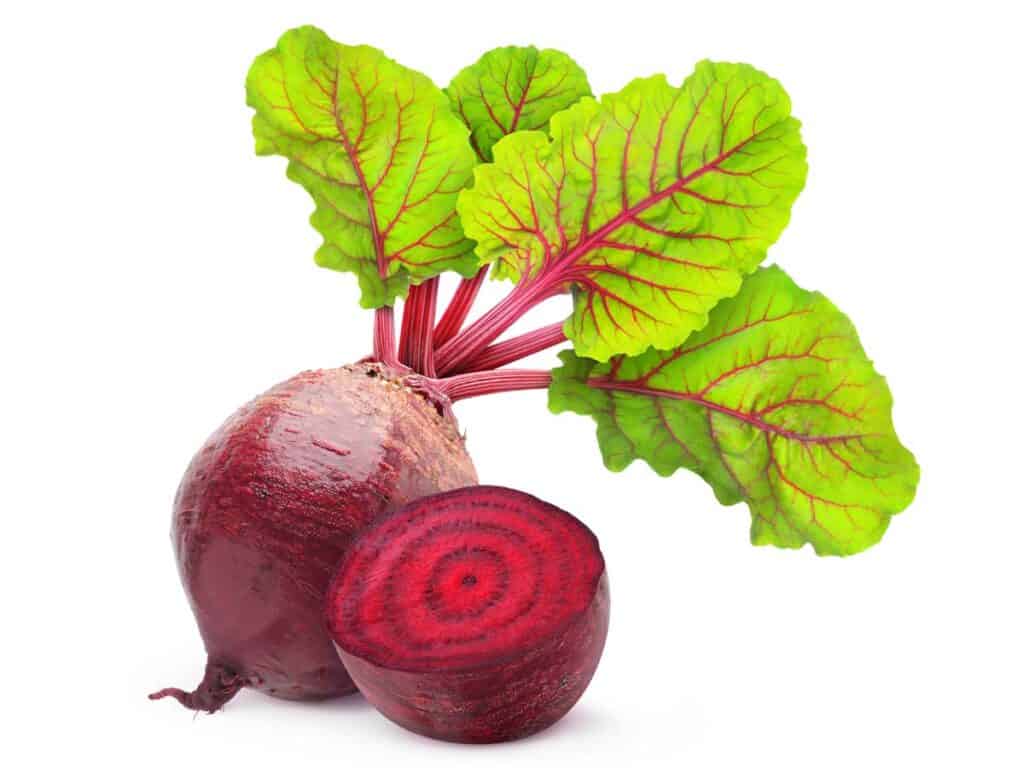
Beet Greens
Many people don't realize that beet greens are edible. Beet greens have a mild earthy flavor. Beet leaf pesto is a great way to use an edible part of the beet plant that would normally be thrown away.
Beet stems can be tough so it is best to trim the leaves from their stems.
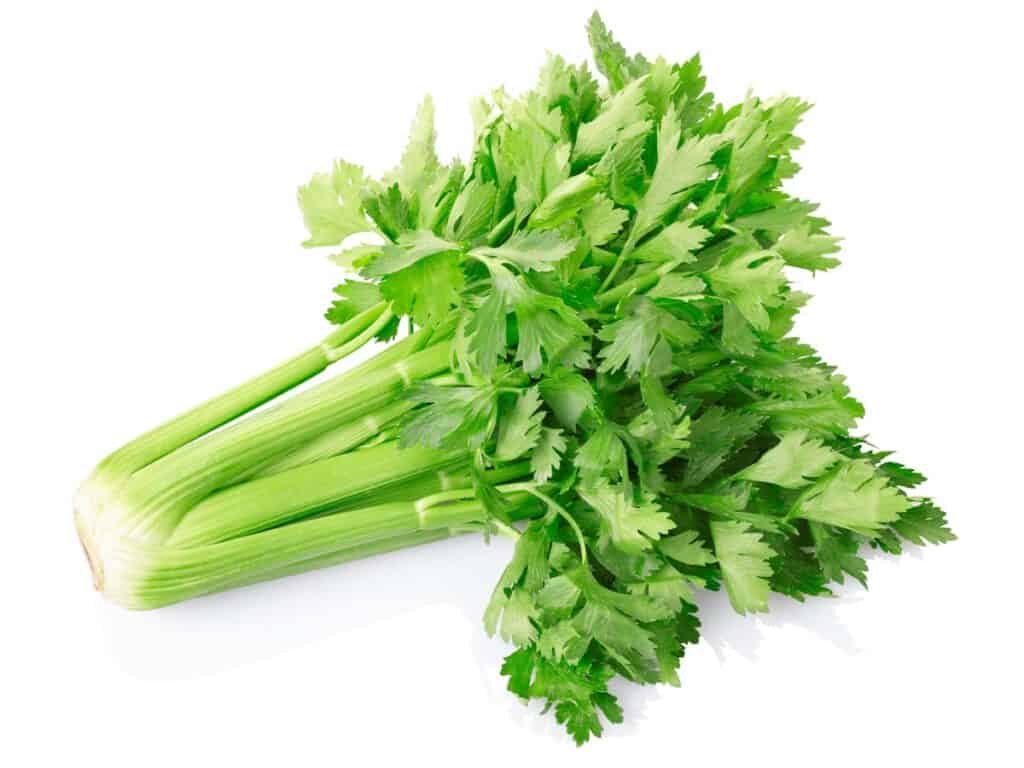
Celery Leaves
Celery leaves have a much milder flavor than basil leaves. Like beet greens, celery leaves are often thrown away because most people don't realize they are edible or how to serve them.
The outer dark green leaves have a stronger fennel flavor and are more fibrous. The inner chartreuse leaves are more tender and have a stronger flavor than the celery stalks.

Broccoli
Before using broccoli in pesto it is best to blanch the florets. To blanch broccoli bring a pot of salted water to a boil. Add the broccoli and cook for 30 seconds. Transfer the broccoli to a bowl of ice water to stop the cooking process Allow the broccoli to cool in the ice water for one minute and then remove the broccoli from the ice water and pat dry.
Another option is to roast the broccoli at 400 degrees Fahrenheit for 30 minutes before adding it to the pesto.
Other Pesto Ingredients
Traditional pesto ingredients include olive oil, garlic, parmesan, and pine nuts. When I make pesto I like to add a little lemon juice and zest to brighten the other flavors.
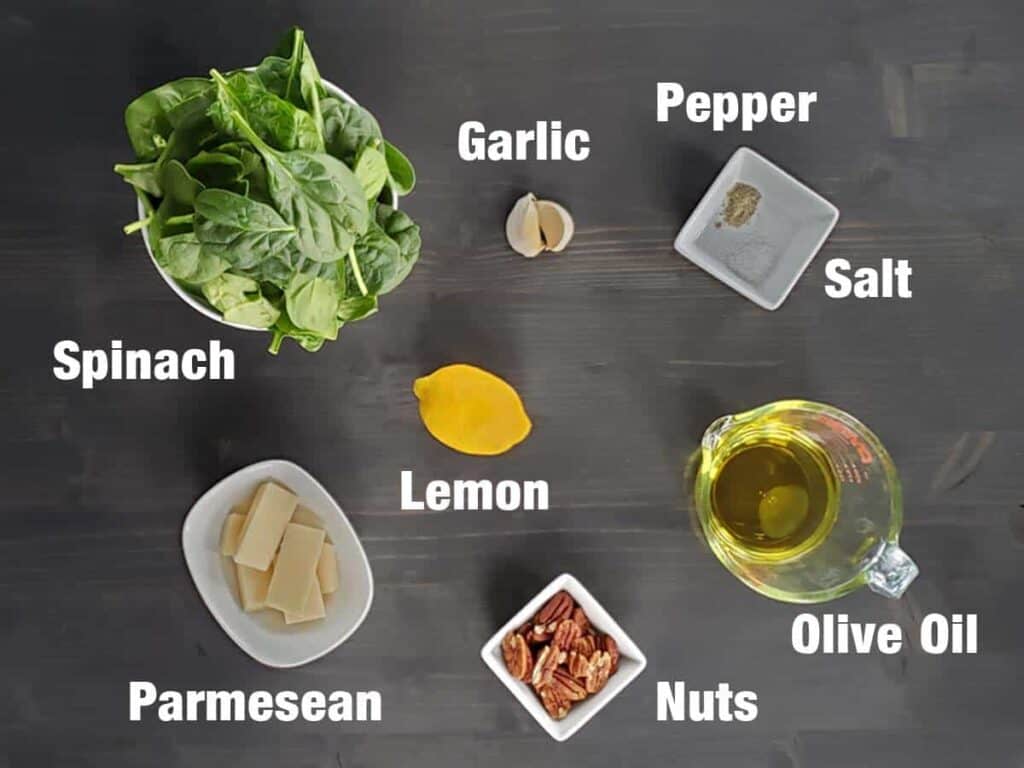
Olive Oil: I recommend using extra virgin olive oil because of its milder flavor. Save the regular olive oil for dishes that are cooked.
Parmesan Cheese: If you don't have Parmesan you could substitute another hard dry cheese like Romano. If you can buy block cheese and grate it yourself. The flavor will be fresher. Avoid the powdered parmesan cheese that comes in a green can.
Garlic: I prefer fresh garlic especially because it can go into the blender whole and I don't have to chop it but you could also use jarred minced garlic.
Nuts: Traditionally pesto is made with pine nuts. But they can be expensive and are not something I keep in my pantry. Pretty much any nut will work, use whatever you have in your pantry. You make this pesto with walnuts, pecans, peanuts, or my favorite cashews. If you have a nut allergy try substituting sunflower seeds for the nuts.
Lemon Juice and Zest: Lemon juice's acid helps to brighten the pesto's flavor. You could also try substituting three tablespoons of balsamic or apple cider vinegar.
Green of Your Choice: Basil is the traditional herb used in pesto, but you can choose any of the substitutions mentioned above to make an equally delicious pesto.
Equipment
Salad Spinner: Salad spinners make quick work of washing a drying a variety of leafy vegetables and herbs.
Blender or Food Processor: Easily puree the pesto ingredients. If you don't have either a blender or food processor you could also use a stick blender.
Rubber spatula: For folding batters together and scraping the sides of bowls, I prefer a stiffer spatula like this one from OXO. It fits comfortably in my hand, is dishwasher safe, and is heat-resistant up to 600 degrees Fahrenheit. Both the handle and head are silicone coated which makes it easy to clean and safe to use with my non-stick cookware and bakeware.
Directions
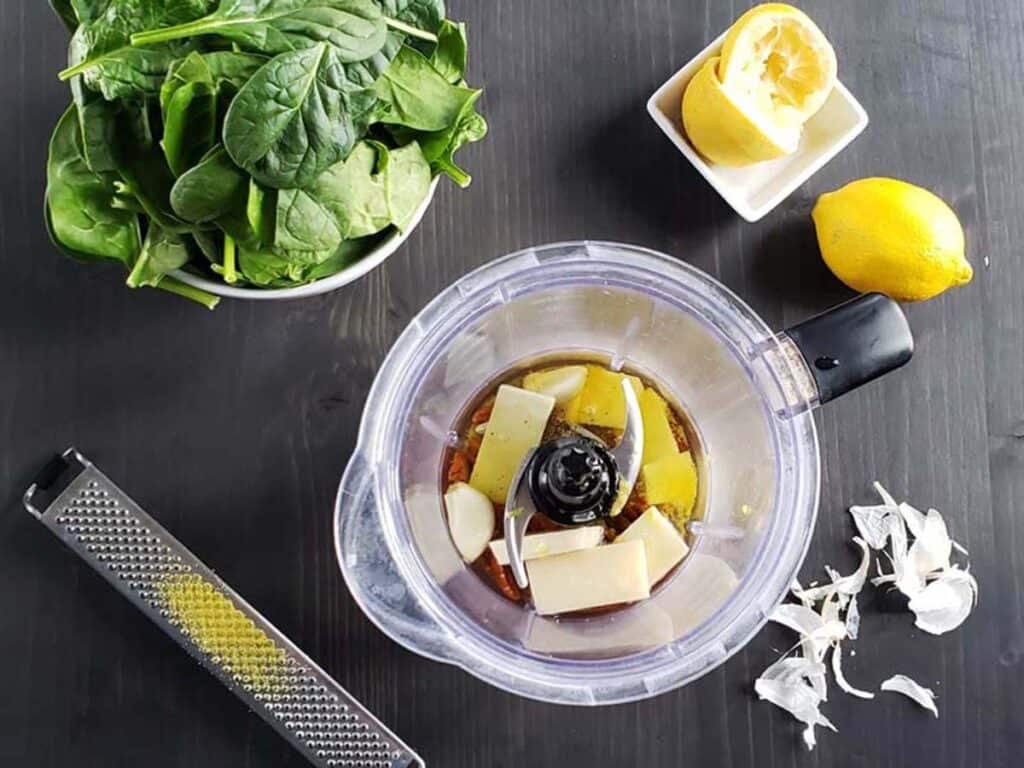
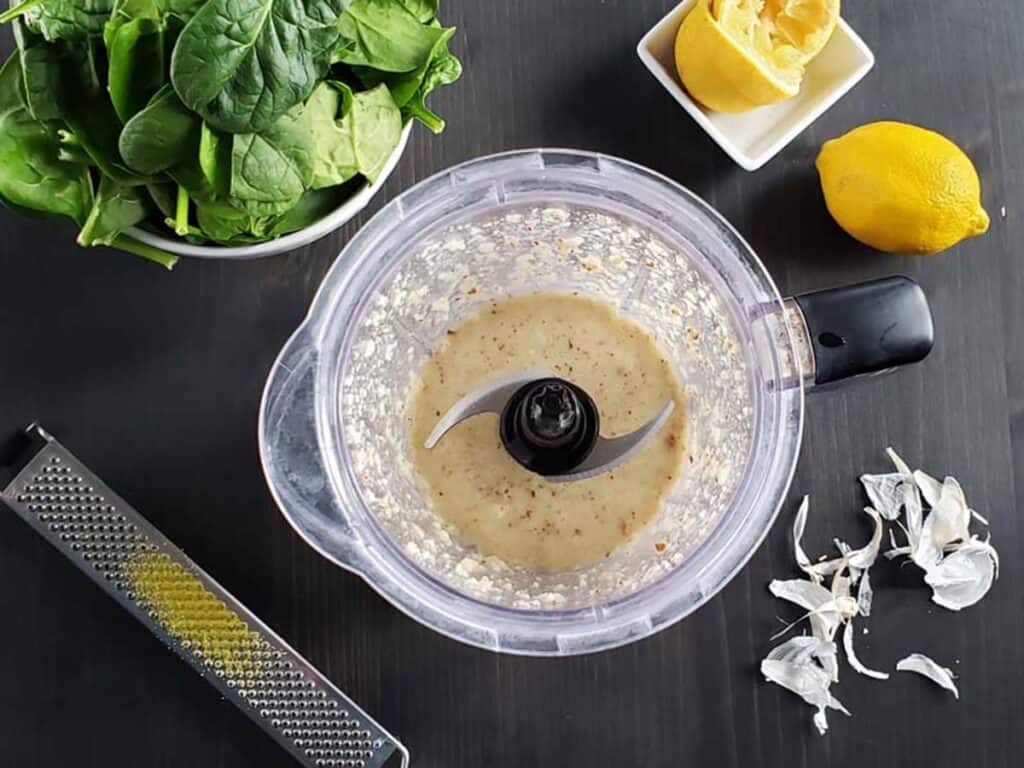
Rinse the leafy greens really well under cold water. Pat dry or use a salad spinner to spin the spinach dry.
Add the oil, Parmesan cheese, garlic, nuts, lemon juice and zest, salt, and pepper to a food processor or blender, puree until a paste is formed. Scrape down the sides with a rubber spatula if necessary.
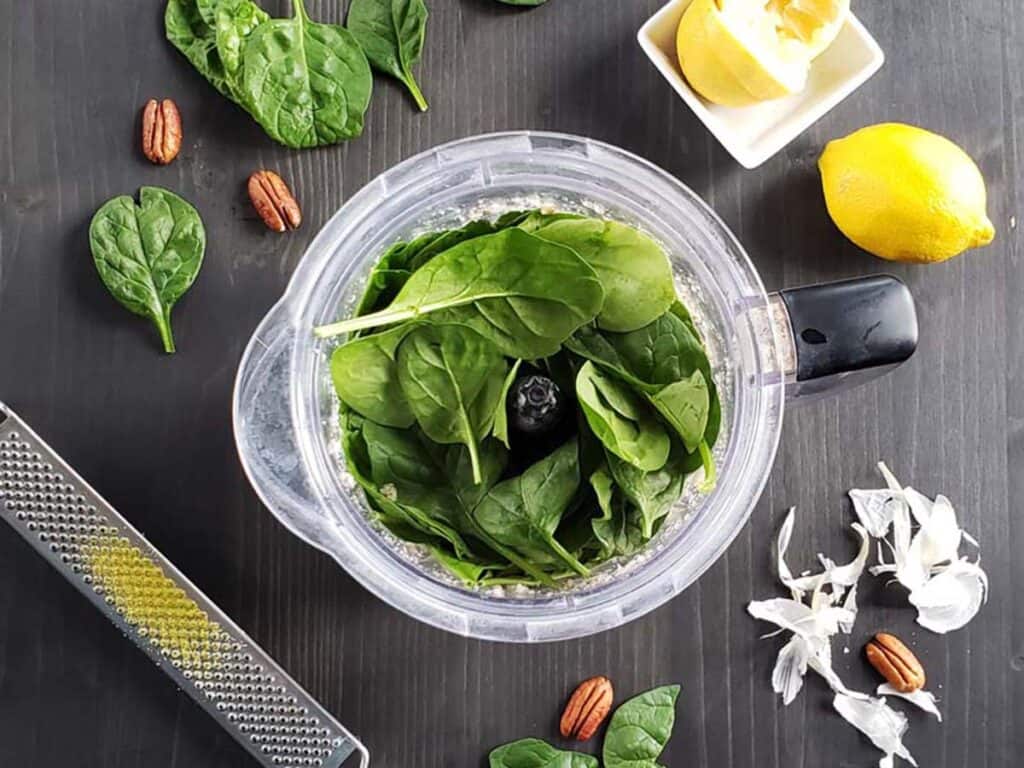
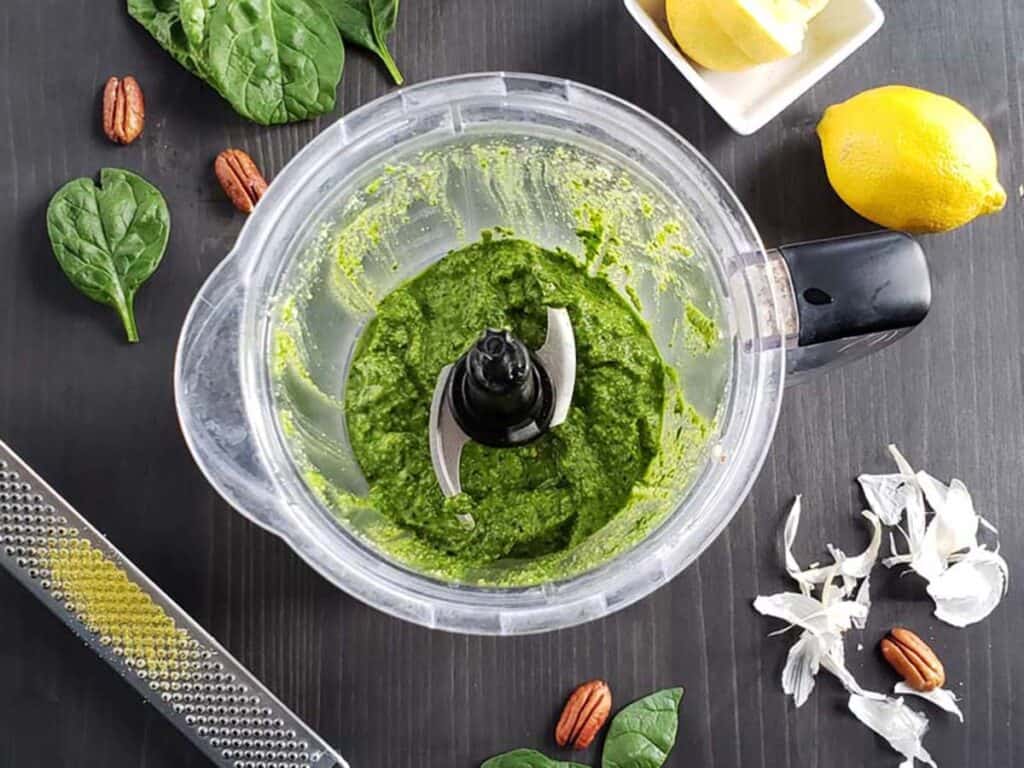
Add the leafy greens and blend for as short a time as possible to maintain their color.
Taste and adjust the seasoning if necessary.
Ready to serve your pesto? Here are the Best Pastas For Pesto.
Frequently Asked Questions
Pesto can be stored in the refrigerator for about five days.
It can also be frozen for up to three months. Pour any unused pesto into an ice cube tray and freeze. Once the pesto has frozen place the pesto cubes in a zip-top bag labeled with the date and contents. I really like these silicon ice cube trays. They are flexible which makes removing the cubes easier.
Yes, but fresh lemon is ideal because you can use some of the zest as well.
Pesto turns brown when the pureed greens come into contact with oxygen and begin to oxidize. To prevent browning pour a little olive oil over the top of the pesto. This creates an airtight seal and will prevent the pesto from turning brown.
If you mean the powdered Parmesan found in those green shakers on a pantry shelf, no. Your pesto won't taste as good plus there are a bunch of additives in powdered Parmesan.
If you mean the tubs of freshly grated Parmesan cheese in the refrigerated section of the grocery store yes.
Tips
- Toasting the nuts before adding them to the pesto brings out their nutty flavor but isn't necessary.
- Increase pesto's flavor by adding a couple of roasted red peppers, a charred jalapeno, or sun-dried tomatoes.
- Add more or less olive oil based on your personal texture preference. If you prefer a more paste like consistency add less olive oil. If you prefer a looser more sauce like pesto add more olive oil.
- Pesto freezes really well. Pour any unused pesto into an ice cube tray and freeze. Once the pesto has frozen place the pesto cube in a zip-top bag labeled with the date and contents. Pesto can be frozen for up to three months. I really like these silicon ice cube trays. They are flexible which makes removing the cubes easier.
Serving Suggestions
- Toss with cooked pasta, roasted vegetables, and chicken for a quick dinner.
- Use it as a sauce for homemade pizza.
- Spread it on toast with sliced tomatoes and a sprinkle of salt.
- Stir some into you favorite pasta salad.
- Use it as a salad dressing.
- Mix with sour cream to create a dip.
- Stir into mashed potatoes instead of using butter.
- Use it as a sauce for steak or grilled chicken.
Recipes Using Pesto
📖 Recipe
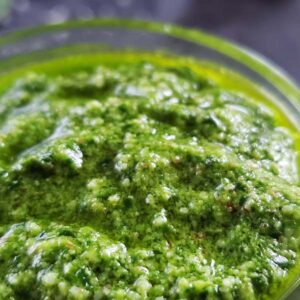
Easy Homemade Basil Free Petso
Equipment
- salad spinner
- blender or food processor
Ingredients
- ½ cup olive oil
- ½ cup Parmesan cheese cut into 1-inch pieces
- ¼ cup of your favorite nut
- 2 cloves of garlic peeled
- 1 lemon juice and zest
- ¼ teaspoon kosher salt
- ⅛ teaspoon ground black pepper
- 2 ½ cups green of your choice
Instructions
- Add the ½ cup olive oil, ½ cup Parmesan cheese , ¼ cup of your favorite nut, 2 cloves of garlic , juice and zest of 1 lemon , ¼ teaspoon kosher salt, and ⅛ teaspoon ground black pepper to a food processor or blender, puree until a paste is formed. Scraping down the sides with a rubber spatula if necessary.
- Add the 2 ½ cups green of your choice and blend for as short a time as possible to maintain its color.
- Taste and adjust the seasoning if necessary.
Notes
- Toasting the nuts before adding them to the pesto brings out their nutty flavor but isn’t necessary.
- Increase pesto’s flavor by adding a couple of roasted red peppers, charred jalapenos, or sun-dried tomatoes.
- Add more or less olive oil based on your personal texture preference. If you prefer a more paste-like consistency add less olive oil. If you prefer a looser more sauce-like pesto add more olive oil.
- Pesto freezes really well. Pour any unused pesto into an ice cube tray and freeze. Once the pesto has frozen place the pesto cube in a zip-top bag labeled with the date and contents. Pesto can be frozen for up to three months. I really like these silicon ice cube trays. They are flexible which makes removing the cubes easier.
Nutrition
Thanks for Reading!
If you try this recipe, let me know! Leave a comment and rate it below! You can also snap a picture and post it on Facebook or Instagram be sure to tag me @RaspberriesandKohlrabi.
Subscribe to get more recipes and tips by email.
More Kitchen Tips
- How to Cool Down Spicy Chili
- How to Dry Out Bread
- How to Freeze Peaches
- How to Cook with Fresh Herbs
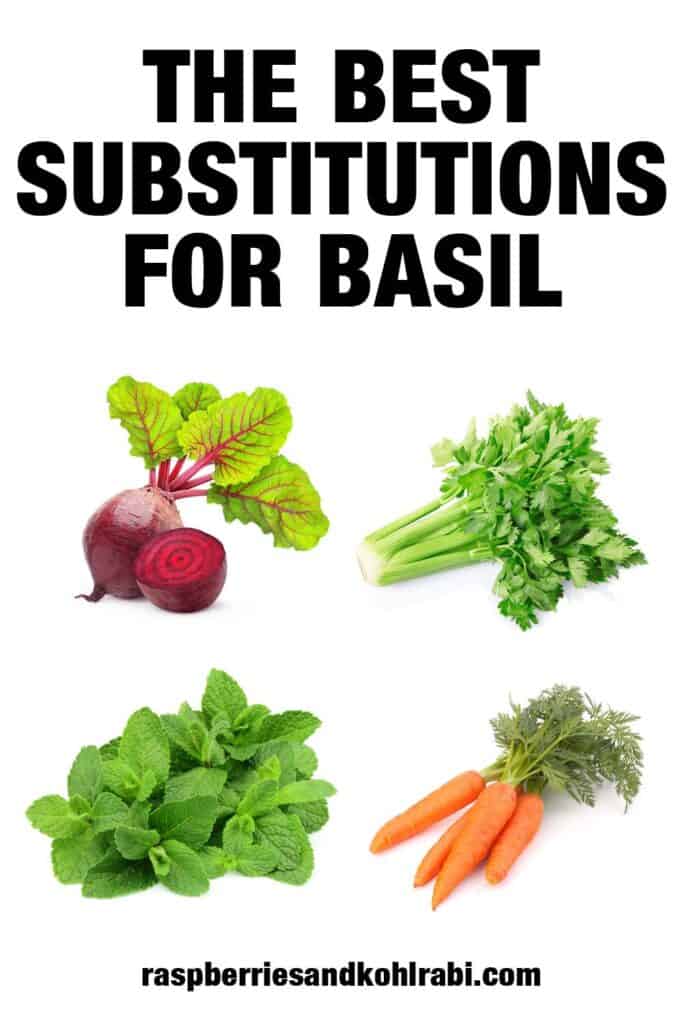


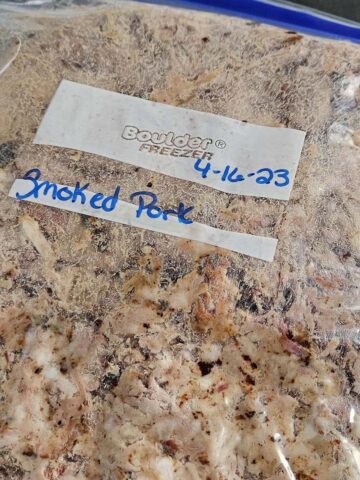
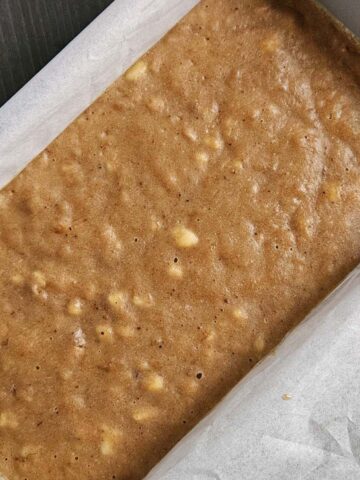

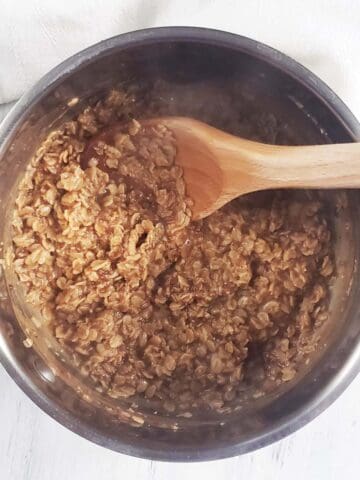
Comments
No Comments